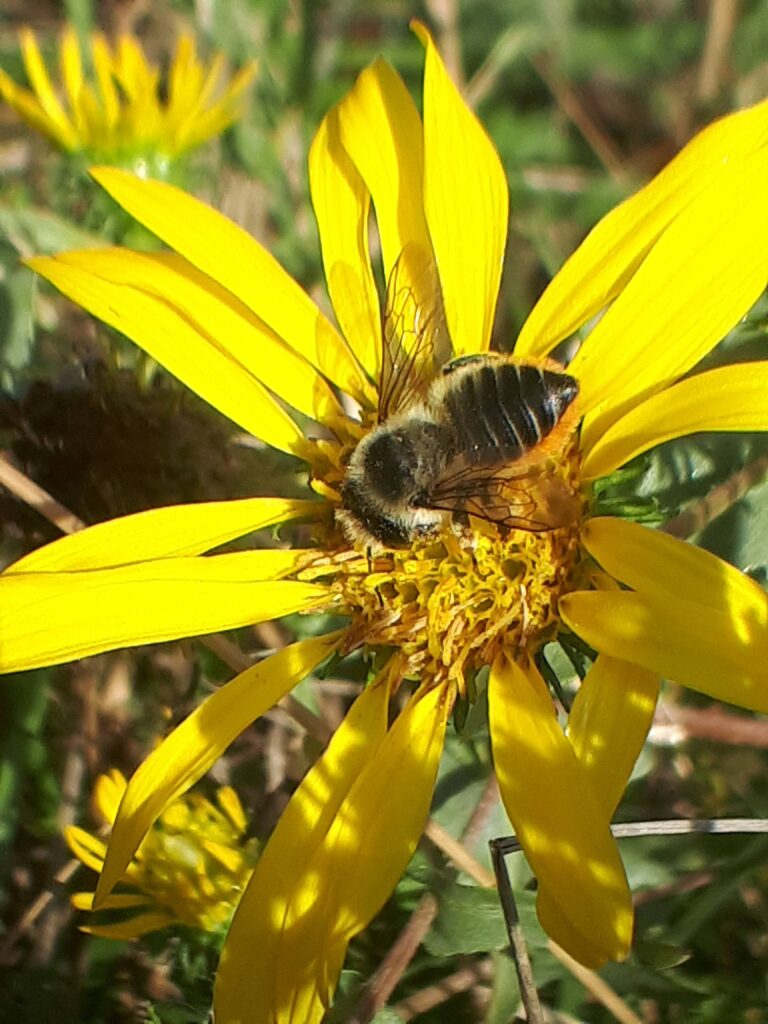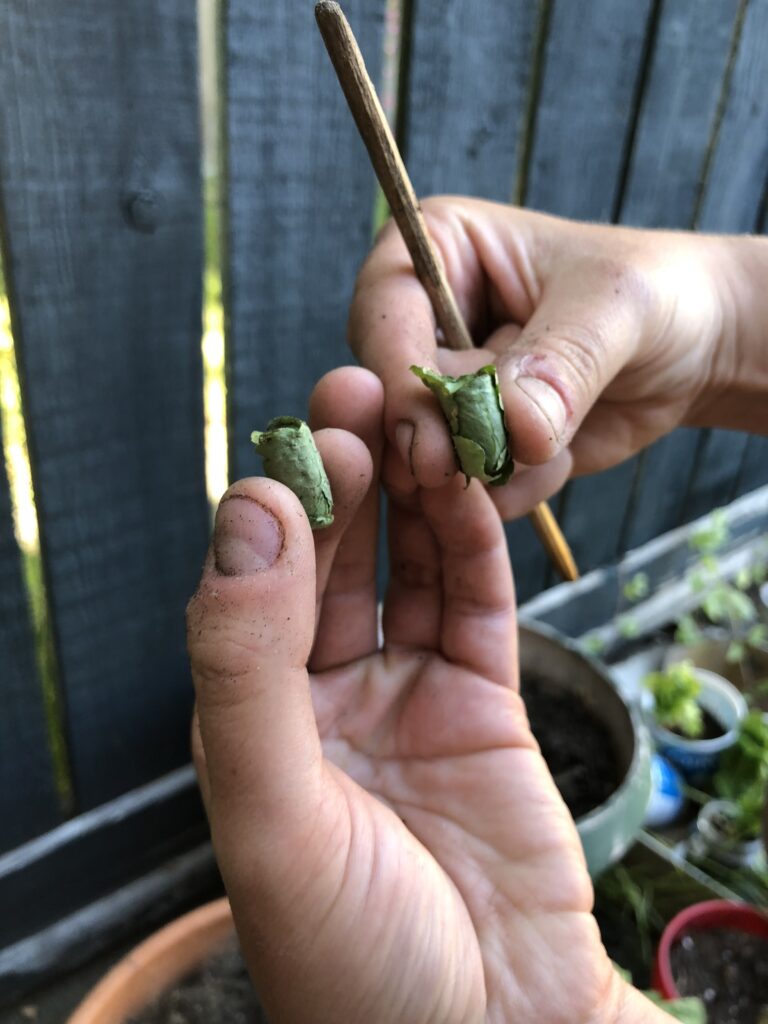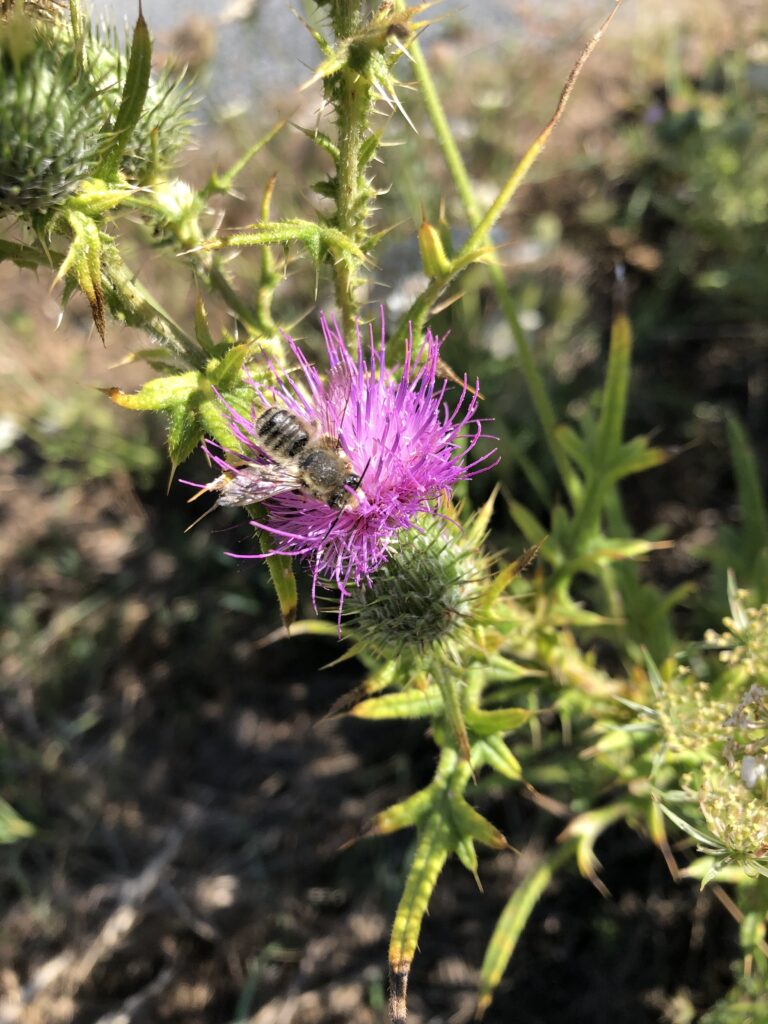Leaf-cutter Bees (Family Megachilidae)

Commonly mistaken for honeybees, the leafcutter bee, of the family Megachilidae, has some distinctive characteristics which make it distinguishable from its honey-producing cousins. One of the main differences is their colouring. These bees are mostly black. The hairs on their abdomen can make them look like they have a small amount of striping, but its much fainter than the bold yellow and black striping of honeybees. Leafcutter bees have hairs on the underside of their abdomen specialized for carrying pollen, giving them a distinguishing bright yellow tummy. Lastly, they are solitary insects, unlike the gregarious honeybee. These bees live alone and do not have nests or hives to defend, so they are not an aggressive insect.

Like their name suggests, leafcutter bees use their mandibles to cut small circular pieces of leaf to make nests for their eggs. Each packet will contain some pollen and an egg. These packets are placed in soil or other cavities in plant debris. The pollen in these nests will allow the bees to last the winter, until they emerge in the spring as adults.

These bees are important pollinators for many different species of plants. They are even sometimes used in commercial agriculture as a generalist pollinator for food crops. Some researchers have found them to be a more effective pollinator than honeybees, doing the work of up to 20 honeybees! However, because of their choice of nesting materials, they are sensitive to pesticide application. If you are noticing neat, round sections being removed from the leaves of your plants, you likely have a friendly neighbourhood leafcutter bee! The damage from these activities rarely does significant harm to the plant, and the pollinator benefits often outweigh the aesthetic cost. If you are worried about the damage to your plant, a simple cheesecloth cover will likely deter any more unwanted pruning.
For more information, visit BuzzAboutBees, and the Entomology Department of the University of Florida.


